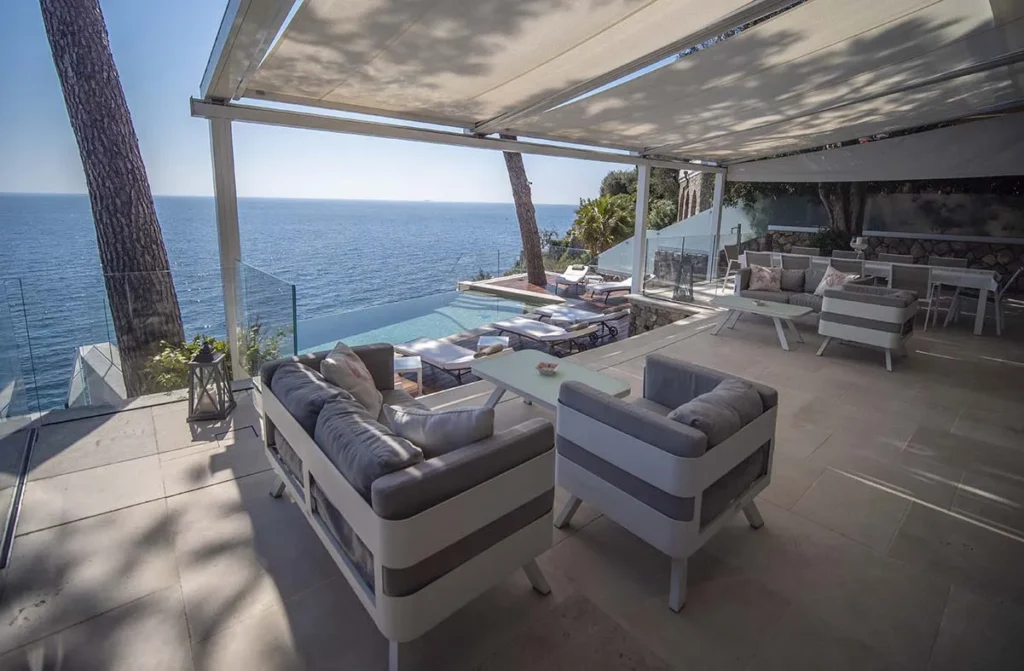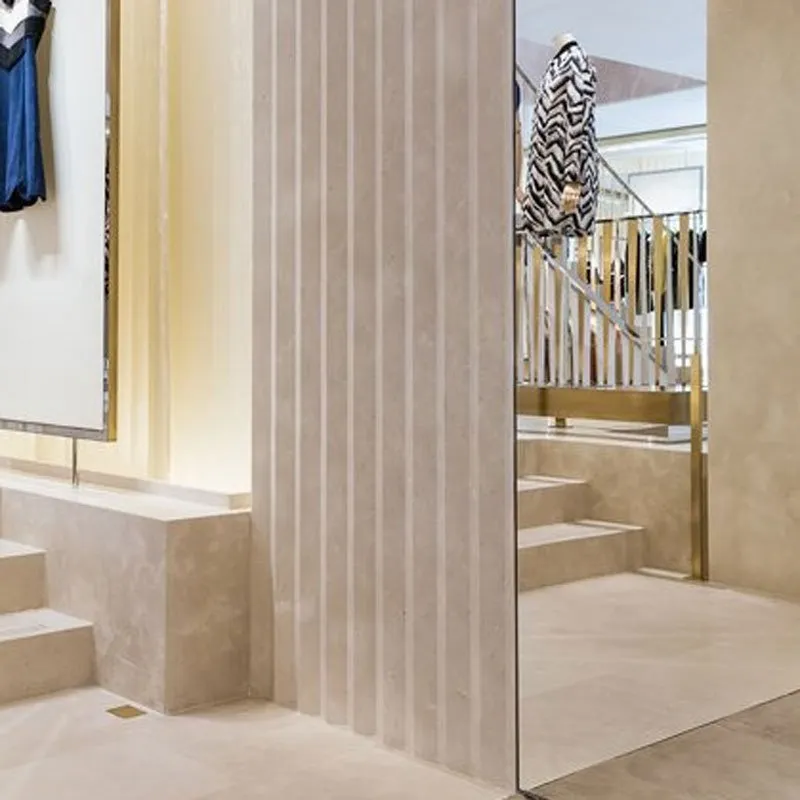
In the field of construction and design, the allure of natural stone endures across centuries, seamlessly bridging the gap between nature’s untamed beauty and human craftsmanship. This timeless material is not only chosen for its durability and strength but also for the unique elegance it bestows upon any project it graces.
Among many natural stones that have been celebrated for their beauty and resilience, Trani Stone emerges as a distinguished example, encapsulating both the artistry of the natural world and the pinnacle of human ingenuity in its application.
Trani Stone: Italy’s Testament to Timeless Beauty
Trani Stone, hailing from the picturesque landscapes of Italy, is more than just a material. This stone has been a favorite among architects, designers, and artisans alike. Its versatility extends gracefully across a spectrum of design styles, effortlessly adapting from the crisp lines of modern aesthetics to the charming rusticity of country-inspired interiors.
In contemporary settings, its sleek texture and refined finish bring a touch of sophistication, complementing minimalist themes with ease. Conversely, in country environments, Trani Stone’s innate warmth and earthy hues meld seamlessly with traditional elements like wooden accents, imbuing spaces with an inviting, cozy ambiance.
Why Choose Trani Stone?
- Durability: Trani Stone is renowned for its durability, able to withstand wear and tear over time. Its resilience makes it suitable for both indoor and outdoor applications.
- Aesthetic Appeal: With its natural beauty and unique veining, Trani Stone adds elegance and sophistication to any space. Its warm hues and smooth texture create a timeless aesthetic.
- Versatility: Trani Stone can be used in various applications, including flooring, wall cladding, countertops, and even sculptures. Its versatility allows for creative design possibilities.
- Heat Resistance: Trani Stone has excellent heat resistance, making it ideal for use in kitchens and around fireplaces where temperatures can fluctuate.
- Low Maintenance: Compared to other materials, Trani Stone requires minimal maintenance. Regular cleaning with mild soap and water is usually sufficient to keep it looking its best.
- Hygienic: Trani Stone is non-porous, which means it’s resistant to stains and doesn’t harbor bacteria or allergens. This makes it a hygienic choice for kitchen countertops and bathroom surfaces.
- Longevity: When properly cared for, Trani Stone can last a lifetime, maintaining its beauty and functionality for generations.
- Environmental Friendliness: Trani Stone is a natural material, quarried from the earth, making it an eco-friendly choice for environmentally conscious consumers.
The Diverse Applications of Trani Stone: Enhancing Spaces Inside and Out

- Internal Flooring: Trani Stone, frequently utilized for internal flooring in residential, commercial, and public buildings due to its durability and elegant appearance, seamlessly integrates marble floors with natural stone, enhancing its appeal further.
- External Flooring: Trani Stone is also used extensively for outdoor flooring applications such as patios, walkways, and courtyards. Its resilience to weathering and ability to withstand heavy foot traffic makes it an ideal choice for enhancing outdoor spaces while maintaining a cohesive design aesthetic with the surrounding architecture.
- Coatings for Walls: Beyond flooring, Trani Stone can be processed into thin slabs or tiles and applied as wall cladding to impart a sense of timeless elegance to interior spaces. Whether used in kitchens, bathrooms, or living areas, Trani Stone wall coatings enhance visual appeal while providing a durable surface that is easy to clean and maintain.
- Exterior Cladding: Trani Stone’s versatility extends to exterior applications as well, where it can be used as cladding for building facades. Its natural beauty and durability help create striking architectural features that withstand the test of time while requiring minimal maintenance.
- Kitchen Countertops: In kitchens, Trani Stone is a popular choice for countertops due to its resistance to heat and staining, making it suitable for food preparation areas. Its smooth texture and subtle variations in color add character to kitchen spaces, enhancing their aesthetic appeal.
- Bathroom Surfaces: Trani Stone’s moisture resistance and easy-to-clean properties make it an excellent choice for bathroom surfaces such as vanity tops, shower walls, and flooring. Its natural beauty elevates the ambiance of the bathroom, creating a serene and inviting atmosphere.
- Fireplace Surrounds: Trani Stone can be used to create stunning fireplace surrounds, adding warmth and sophistication to living rooms and other interior spaces. Its ability to withstand high temperatures makes it a practical and visually appealing choice for this application.
- Feature Walls: Whether used in residential or commercial settings, Trani Stone can be employed to create eye-catching feature walls that serve as focal points within a space. Its unique texture and subtle variations in color add visual interest and depth to interior designs.
Different Types Of Natural Stone
There are numerous types of natural stones alongside Trani stone. Here are a few examples:
- Granite: A durable and visually striking igneous rock, is favored in construction for its resilience and aesthetic charm. Its distinctive speckled appearance lends elegance to any setting.
Widely used as both marble and natural stone for coatings, granite offers versatility in architectural design. Its robustness also makes it suitable for direct use, ideal for structural elements like countertops and flooring.
- Limestone: Limestone offers a classic and elegant look with its soft, muted tones and subtle patterns. It’s commonly used for flooring and coatings in both interior and exterior applications.
- Travertine: This stone features unique natural pits and voids, giving it a distinct character. It’s often used for flooring and coatings, especially in areas where a rustic or aged appearance is desired.
- Slate: With its fine-grained texture and rich earthy colors, slate is a versatile choice for both flooring and coatings. It’s highly durable and resistant to water, making it suitable for bathrooms and outdoor spaces.
- Sandstone: Sandstone offers a warm and inviting aesthetic with its soft hues and natural variations. It’s commonly used for flooring and coatings in both residential and commercial settings.
- Onyx: Known for its translucent qualities and striking veining, onyx creates a luxurious and dramatic effect when used for flooring and coatings. It’s often chosen for statement areas such as feature walls or entryways.
- Quartzite: Quartzite combines the beauty of marble with the durability of granite, making it an ideal choice for both flooring and coatings. It’s resistant to heat, scratches, and stains, making it suitable for kitchens and outdoor spaces.
Final Thought
In a world where trends come and go, Trani Stone stands as a timeless testament to the enduring beauty and resilience of natural materials. Its allure transcends fleeting fashions, offering a steadfast anchor for architectural expression.
With its timeless elegance and enduring strength, Trani Stone remains a stalwart presence in the ever-changing landscape of design, providing a lasting legacy of beauty and craftsmanship for generations to come.



